Review: Tony DeLap’s hybrids of painting and sculpture are impossible objects
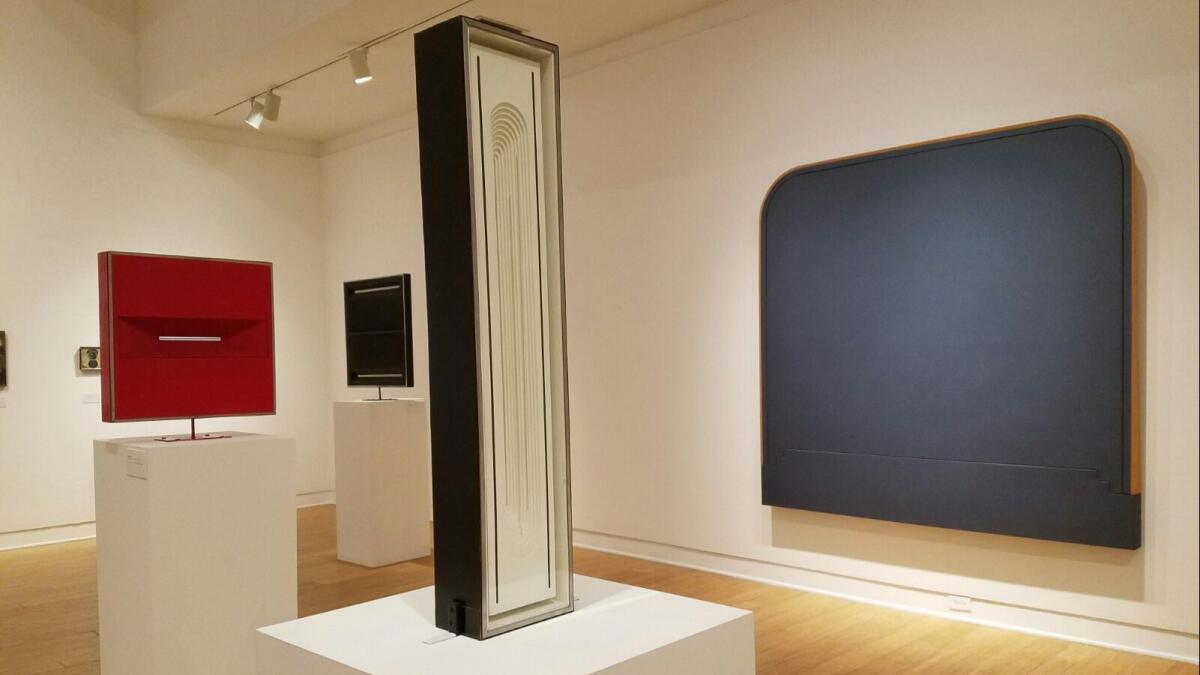
Usually, the front of a painting is the part that counts most. It’s the field where a composition lives, color blooms, subject matter — figurative or abstract — unfolds, brushstrokes are elided or emphasized. The front is where the action is.
Tony DeLap has been making highly unusual paintings since about 1974.
A current show handily demonstrates that the front of a DeLap painting, contrary to expectations, is almost never the main event. The welcome retrospective exhibition at the Laguna Art Museum features 60 paintings and sculptures, plus more than 80 works on paper, by the widely admired Orange County artist, who turned 90 in November.
In fact, more often than not, the front of a DeLap painting is mostly blank. It might be a flatly painted jolt of intense, monochrome color — crimson, say, or especially cobalt blue. A sizable number are a neutral gray or black or else a near-neutral — a dusty gray-green, for instance, like a leaf of lamb’s ear or desert sage.
And good luck finding a brushstroke. DeLap’s paintings are mostly monochrome, but not gesturally so. Each one looks as if it is an uninflected chunk of industrially manufactured color, like powder-coating that has been electrostatically applied.
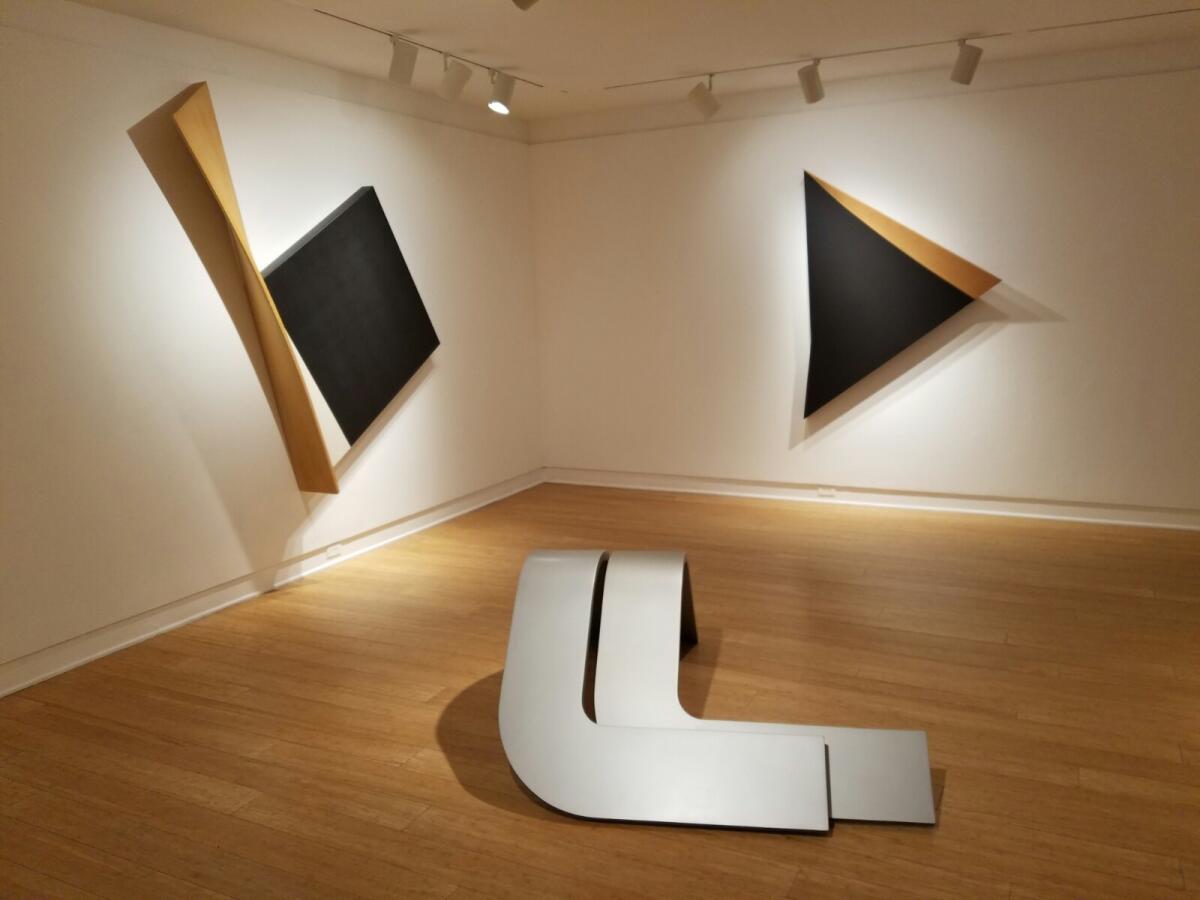
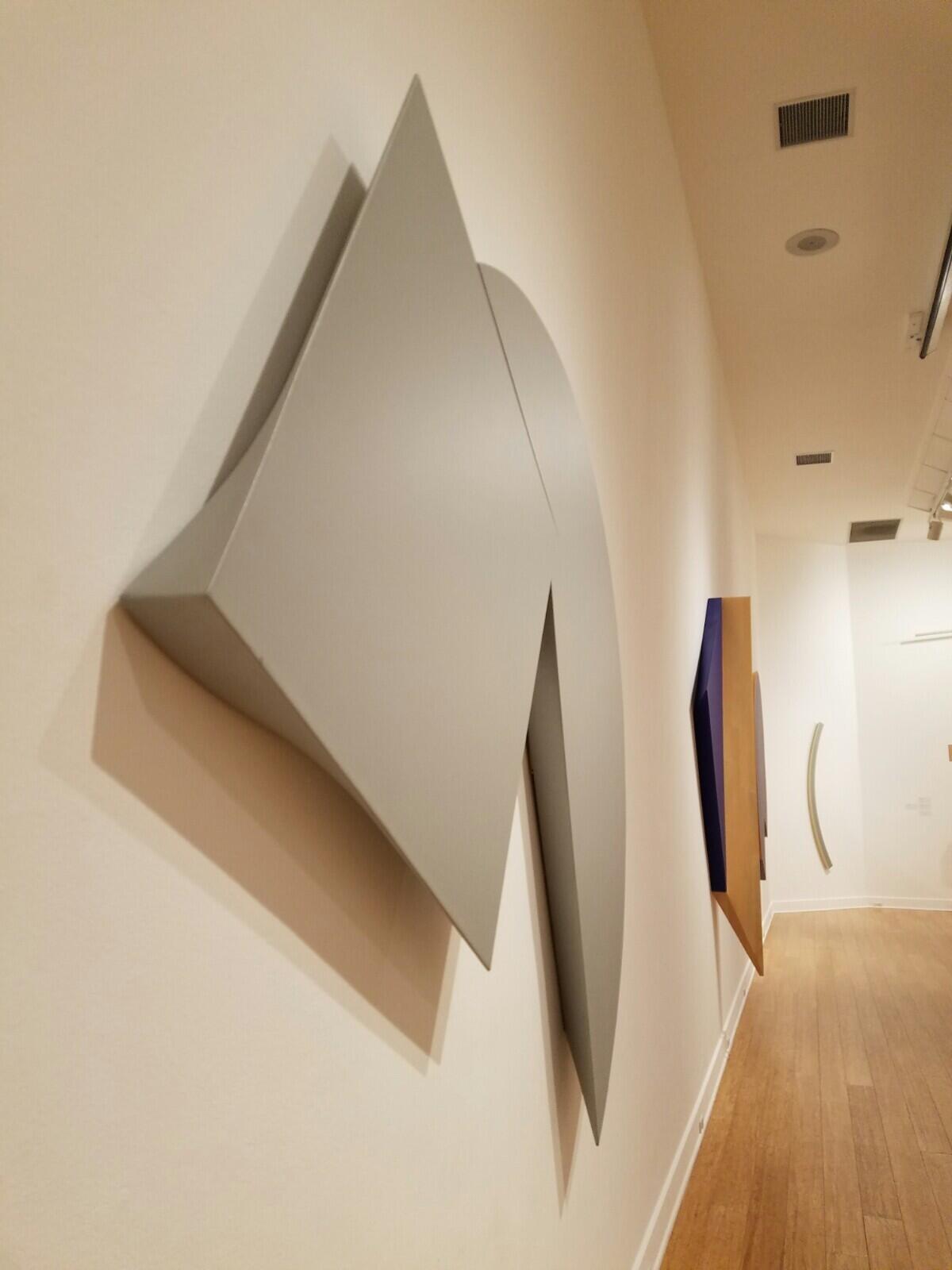
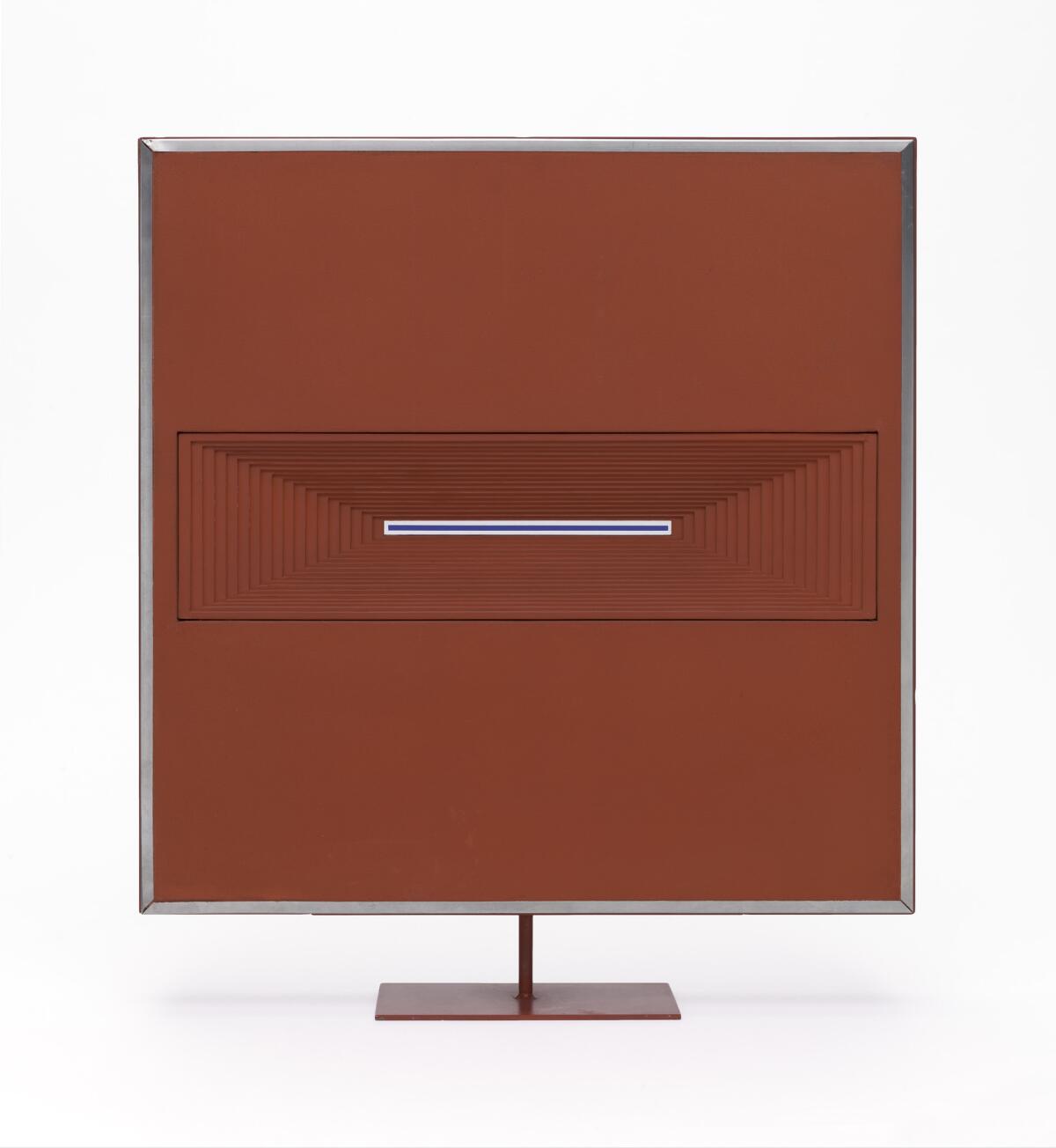
Mostly, though, the surface plane is a keenly wrought mechanism to get you to look to see what’s going on along the sides. There, beyond the painting’s edges, the possibilities are several.
The side might twist like a section of Moebius strip, its wood ribbon starting off as a framing edge but torqueing into a smooth sculptural form. The side might bend into itself and disappear altogether, leaving the surface plane to hang free a few inches from the wall. Or it might be a canvas-covered curve, arcing away from an edge that’s as straight as an arrow.
Eccentric shadows on the wall don’t always correspond to a viewer’s expectations, based on the shape of the painting as seen from the front. Shadow play is a cue that something is up, something that disrupts convention.
By the late 1960s, when artists were intensely scrutinizing every aspect of painting, the rectangle used in conventional canvases had come under concentrated inspection. Ellsworth Kelly, Ron Davis, Frank Stella and many others experimented with canvases in eccentric shapes.
DeLap began slicing up the traditional rectangle — as well as the less common (but equally traditional) circular tondo — into various irregular geometries. A square and a circle might intersect, creating a virtually indescribably shape. A hexagon internally cut up into pie sections could visually flip into an illusionistic projection of a cube, like something by Larry Bell, its internal ridges rippling outward like a pebble dropped in a pond. Unorthodox contours emphasized the painting as a physical object — a thing occupying space, a place where illusion and reality collide.
Some works, such as “Maga” from 1974 and “Spirit Extras” from 1979, are even assembled from multiple shaped canvases.
“Maga” looks like a schematic rendering of a theatrical stage. The top is curved, like a proscenium. The bottom is notched at each side, like steps. Three canvases are cobbled together, the schematic lines that appear to be drawn on the painting’s surface actually made from each canvas abutting the others.
The polished wooden frame around the proscenium twists in toward the wall as it approaches the summit. DeLap is putting on quite a show.
“Spirit Extras” is a leisurely curve nearly 7 feet long — but less than 4 inches wide. On closer inspection, that already modest width turns out to be more modest still, made from not one but two joined canvases. Lines do not exist in nature, so the curved line in the center of the painting is formed by the physical abutment of two canvases.
Just for good measure, DeLap has also torqued the two outer edges of the curve. One bends away from the front, the other bends toward it. “Spirit Extras” is itself a line, assembled from a surplus of linear edges.

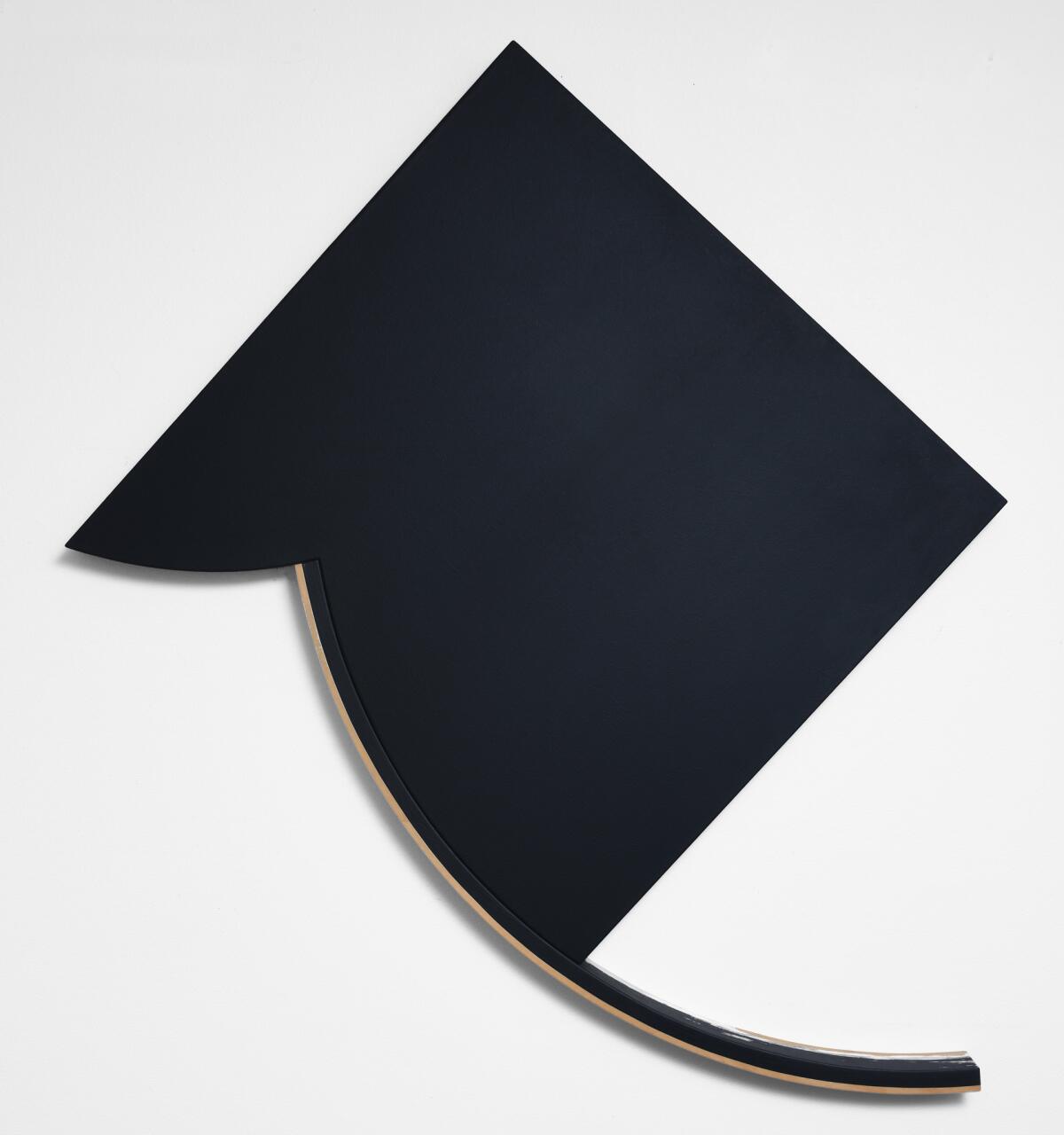
Edges are a thing with DeLap. He wants to push you over them.
Edges are a thing with DeLap. He wants to push you over them.
The most profound edge, metaphorically speaking, is the one that separates life from death. Appropriately, his paintings’ titles often come from the great beyond: Spirit art is a type of picture said to be guided from the afterlife, while Maga is a Hindu priestly caste.
One pleasure of the show is the abundance of his early works, dated between 1961 and 1974, when DeLap’s well-known shaped hybrids of painting and sculpture began to emerge. The earliest are not often seen. Guest curator Peter Frank, who is also responsible for the indispensable catalog, lays out the evolution.
The artist was born in Oakland in 1927, and his work began to mature in the Bay Area just prior to his move to Southern California. (DeLap was a founding faculty member at the then-new UC Irvine in 1965; he taught at the school for the next 26 years.) Eccentric barely begins to describe those early works.
Double-sided tabletop boxes are fronted in glass. Inside are layered planes of thin, painted chipboard stepping down toward the center, often mysteriously suspended in space. The design is like an aerial view of an amphitheater.
At their center, peepholes or narrow slits allow you to look through the object — although typically, the focused view is blocked by a dot or line that DeLap has painted on the glass. Sometimes, the work’s title is spelled out in letters tucked into the four corners on either side of the box — “Mona Lisa,” “Ping Pong,” “Flip Flop,” “Hard Edge.”
These works are like an abstract cross between a Joseph Cornell shadow box and William Hogarth’s “Satire on False Perspective,” a famous 18th century engraving in which the artist deliberately confuses illusionistic effects of linear perspective. (“Whoever makes a design without the knowledge of perspective will be liable to such absurdities,” Hogarth wrote across the bottom of the print.) Frank, the curator, provocatively connects DeLap’s geometric design to the slitted, cast-concrete blocks with which Frank Lloyd Wright built Pasadena’s great Millard House — a DeLap favorite.
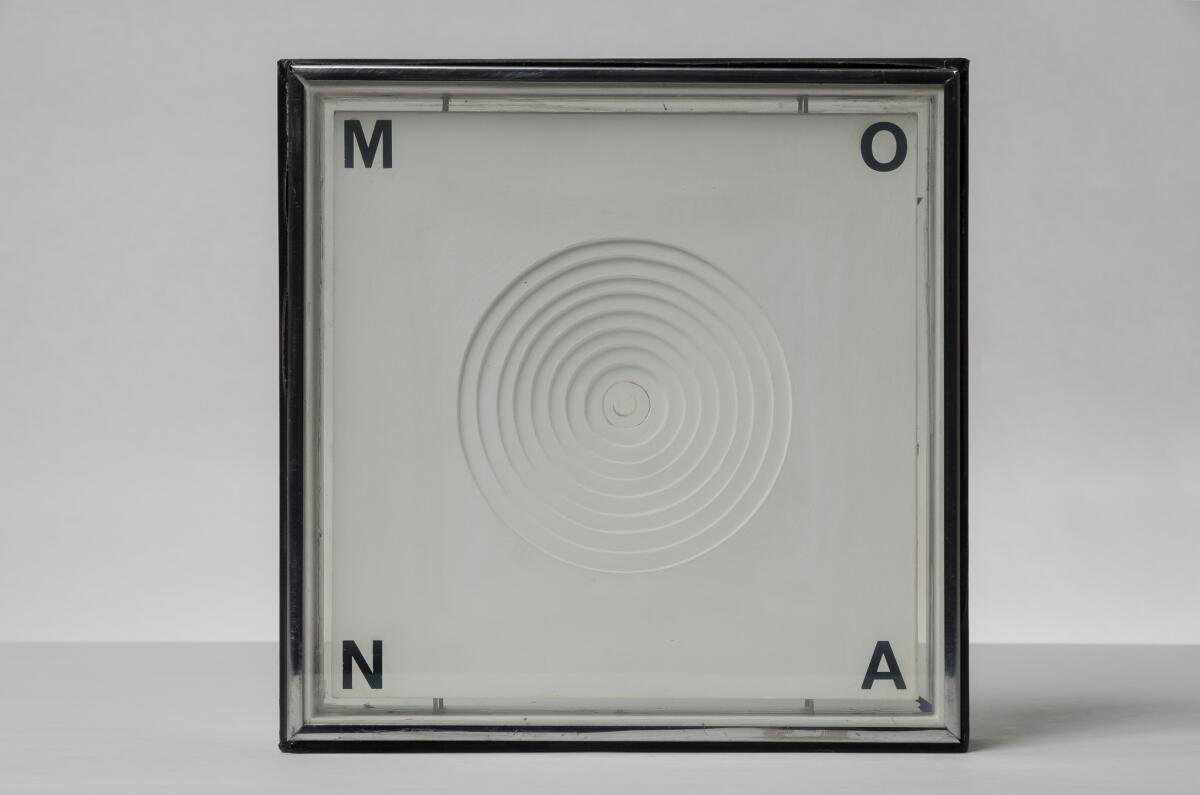
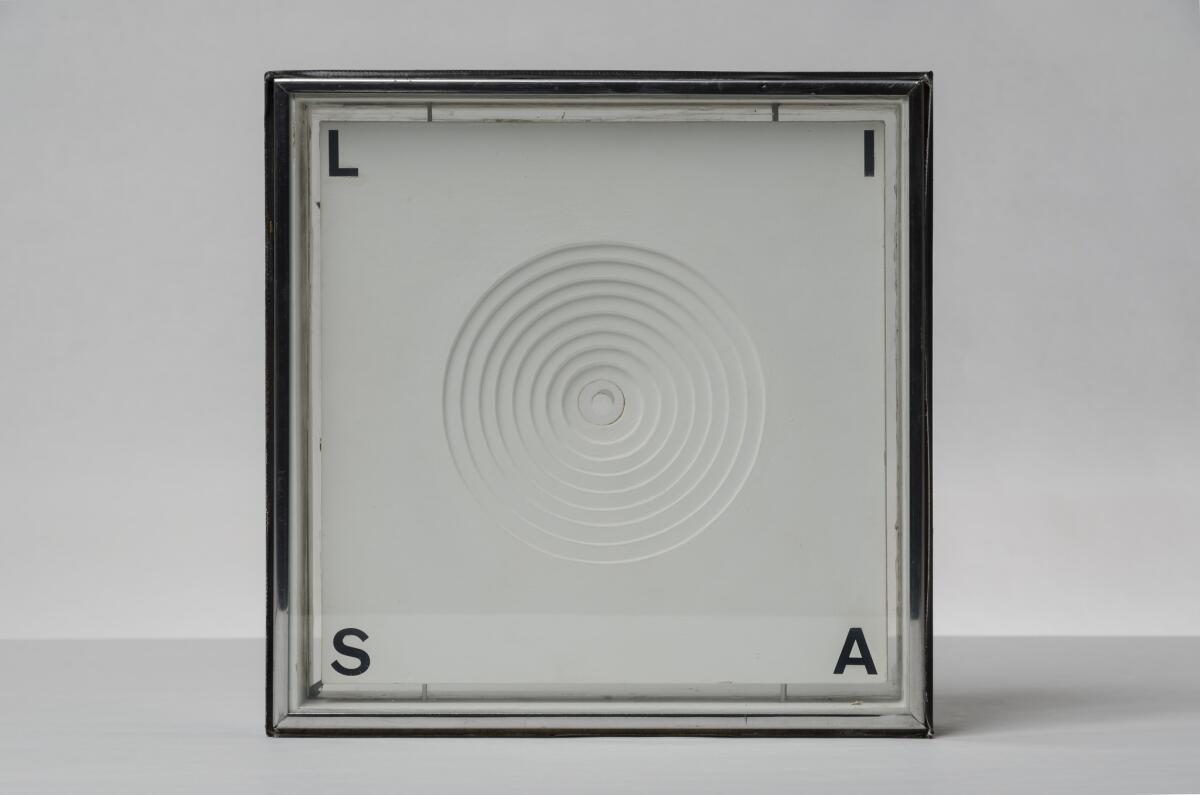
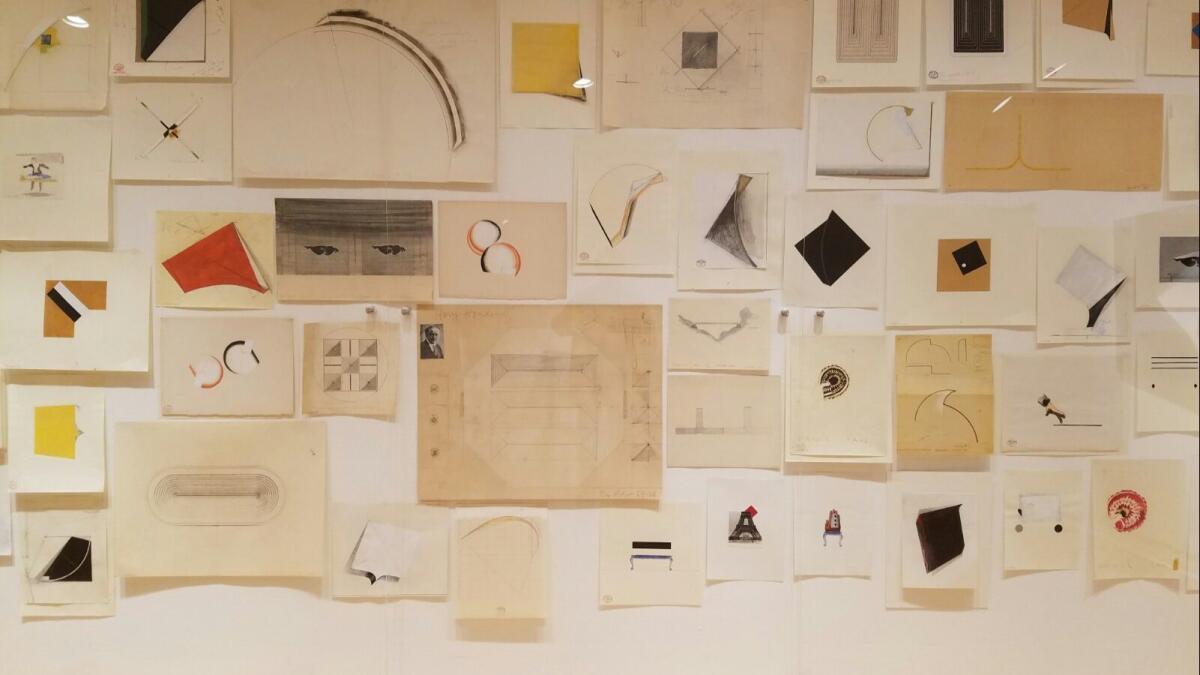
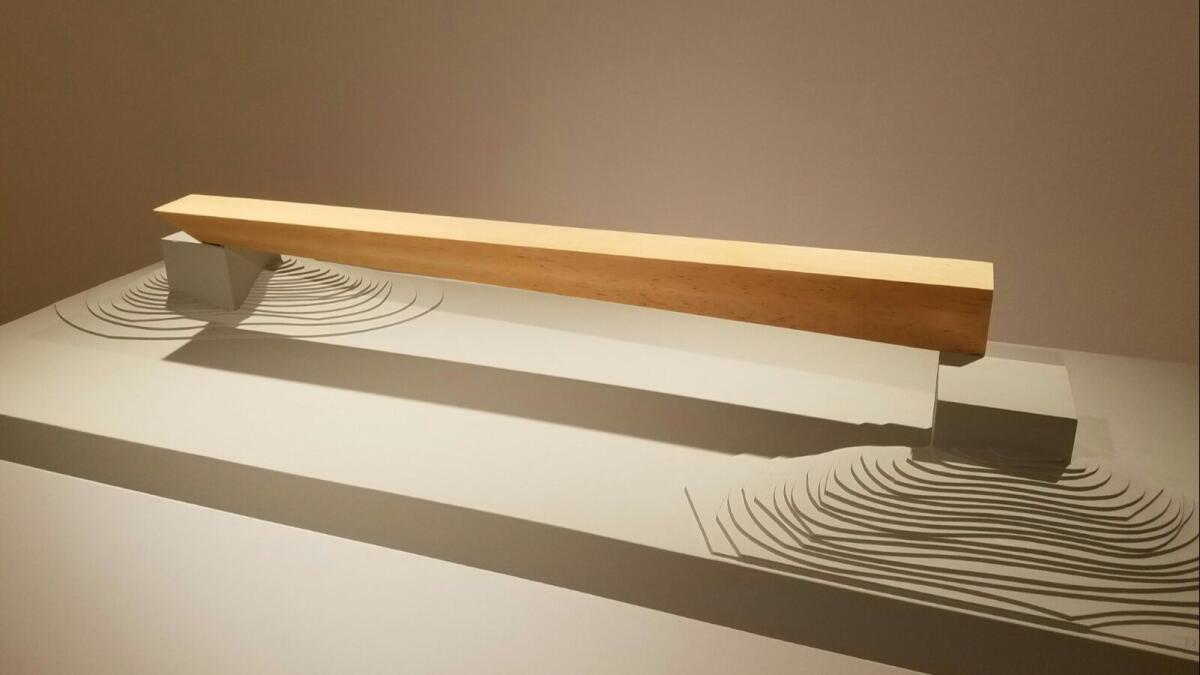
To that I would add the growing prominence of Marcel Duchamp. The Dada imp’s word games and visual pranks were busily bumping off Picasso as the primary influence on the ’60s American avant-garde.
DeLap’s eccentric boxes, which focus vision while blocking it, are related to impossible objects — a type of optical illusion. M.C. Escher’s endless, interlocking stairways are the genre’s most popular example, but its 20th century origins in art are traced to Duchamp.
In Duchamp’s 1916-17 “Apolinère Enameled,” a commercial advertisement for paint showing a little girl painting a bed white is cleverly altered to confuse the perspective lines. The bed impossibly collapses in on itself, while a mirror reflection of the little girl is skewed. Duchamp underscored the deliberateness of his visual trickery by removing a piece of the picture’s frame — telling, perhaps, for the oddball framing devices DeLap was soon making.
The show also includes freestanding painted sculptures — mostly flat, layered, linear forms that unfurl and undulate on the floor or pedestal. These are hybrids of painting and sculpture, like the shaped canvases, but they are less engaging than their wall-bound cousins. DeLap is at his best when approaching hybridization from the painting side rather than the sculpture side. He comes across as a painter at heart.
The exception to the rule is “Floating Lady,” 1974-78, which stands in front of the Orange County Museum of Art a few miles from Laguna Beach. (The maquette for the sculpture is in the show.) A 46-foot wooden beam whose ends balance precariously on two concrete cubes slowly transforms from being square at one end to triangular at the other.
The sculpture is too long for a viewer to take in its slow metamorphosis all at once. It demands close-up scrutiny and attentive inspection to know what’s happening right before your eyes. In the process, a forced perspective both shortens and lengthens the beam’s appearance, depending on where you stand.
“Floating Lady” is its own impossible object. I suspect Hogarth and Duchamp would both approve.
So would Harry Houdini. DeLap has been famously obsessed with magic and magicians throughout his life — his 90th birthday was celebrated at Hollywood’s Magic Castle, where he’s been a member for 50 years — and the results of that fascination are in abundant evidence in the retrospective. It’s a show where the hand of the artist might better be described as often marvelous sleight of hand.
♦ ♦ ♦ ♦ ♦ ♦ ♦ ♦ ♦ ♦
‘Tony DeLap: A Retrospective’
Where: Laguna Art Museum, 307 Cliff Drive, Laguna Beach
When: Through May 28; closed Wednesdays
Information: (949) 494-8971, www.lagunaartmuseum.org
Twitter: @KnightLAT
ALSO
At the Broad, exploring Jasper John's connection to music
Taylor Mac on gay history, 'Hamilton' and his 24-hour extravaganza
The biggest entertainment stories
Get our big stories about Hollywood, film, television, music, arts, culture and more right in your inbox as soon as they publish.
You may occasionally receive promotional content from the Los Angeles Times.








